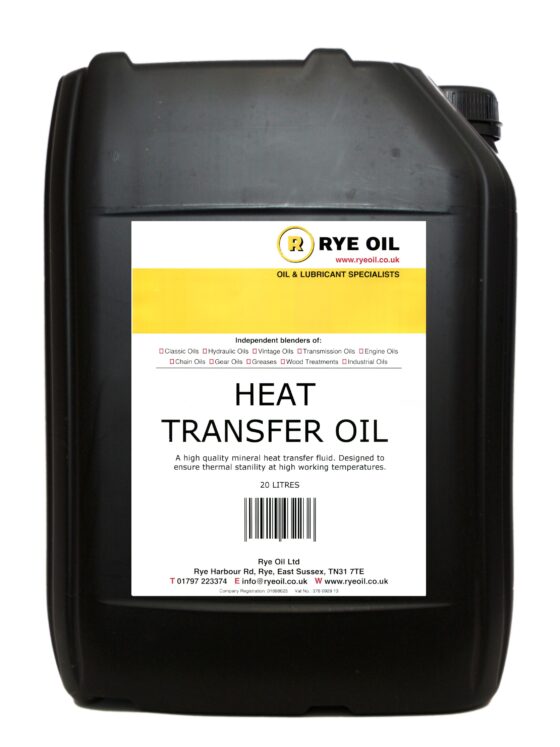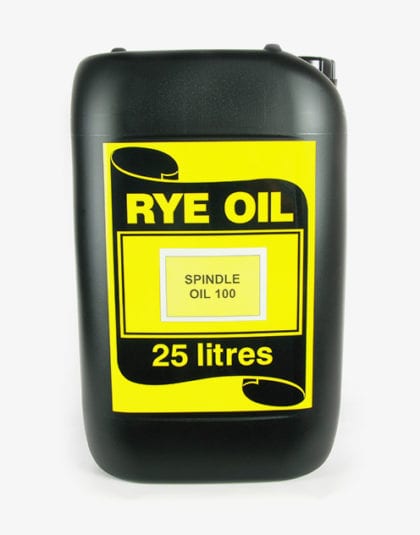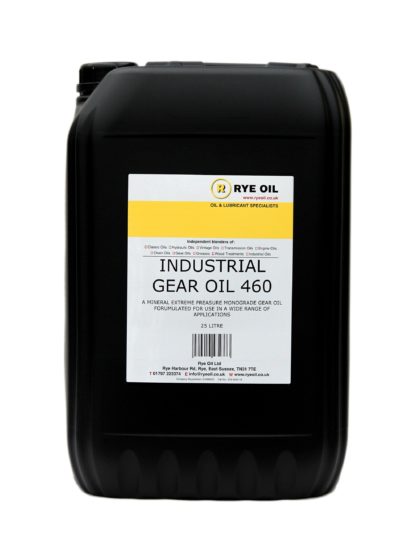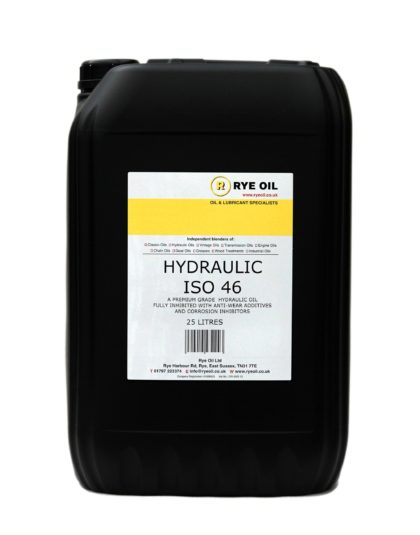Heat Transfer Oil
£48.00
- Description
- Additional information
Description
Heat Transfer Oil
Heat Transfer Oil is manufactured with high quality mineral oils because of the incorporate powerful oxidation inhibitors included. This also helps to ensure the necessary thermal stability for high working temperatures over long periods. These products contain additives to prevent rust and corrosion that can occur in systems that are vulnerable to condensation between operations. Anti-foam additives are also incorporated to encourage the release of air and to collapse foam. This is vitally important because air bubbles or foam can reduce the effectiveness of the heat transfer system. Rye Oil’s Heat Transfer Oils also contain a low temperature flow improver to ensure full circulation at temperatures below room temperature.
HEAT TRANSFER OIL SAFETY DATA SHEET
Physical Characteristics
Density at 15°C 0.872
+Kinematic Viscosity at 100°C (cSt) 5.3
-Kinematic Viscosity at 40°C (cSt) 31
=Kinematic Viscosity at 20°C (cSt) 82
Viscosity Index 102
Further information can be found here
Characteristics of heat transfer fluids
Heat transfer fluids have distinct thermal and chemical properties, which determine their suitability for various industrial applications. Key characteristics include:
- Thermal Stability: This refers to a fluid’s resistance to irreversible changes in its physical properties at varying temperatures. Fluids with high thermal stability have fewer degradation pathways, leading to longer service lifetimes and less maintenance. Determination of a fluid’s thermal stability is often based on tests such as ASTM D6743, which assess degradation products formed under thermal stress.
- Viscosity: The viscosity of a fluid affects its flow characteristics and pumping costs. This is because lower viscosity fluids are easier to pump and circulate within a system.
- Heat Capacity: A fluid’s heat capacity indicates how much thermal energy it can transport and store, impacting the efficiency of the heat transfer process.
- Thermal Conductivity and Thermal Diffusivity: These properties influence the rate at which heat is transferred through the fluid. This is important because it affects how quickly a system can respond to temperature changes.
- Corrosion Potential: Compatibility of a heat transfer fluid with system materials is crucial because minimalizes corrosion and extend the life of the equipment.
- Freezing and Boiling Points: Fluids should have high boiling and low freezing points. This is to remain in the desired phase during the heat transfer process and to avoid phase change-related issues within the operating temperature range.
Additional information
| 20L | 20L |
|---|












